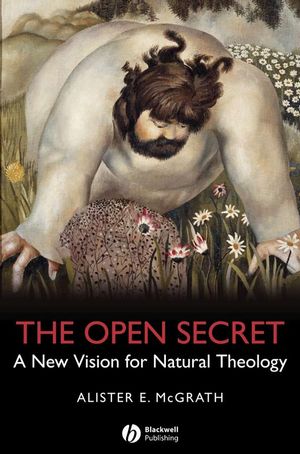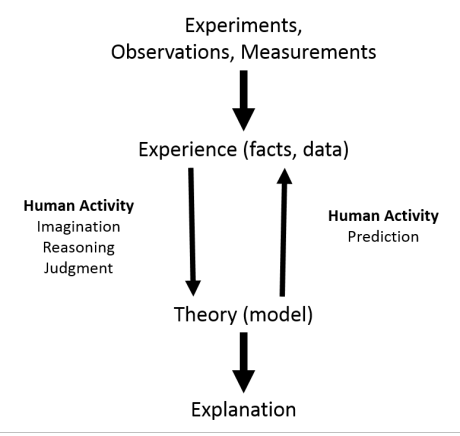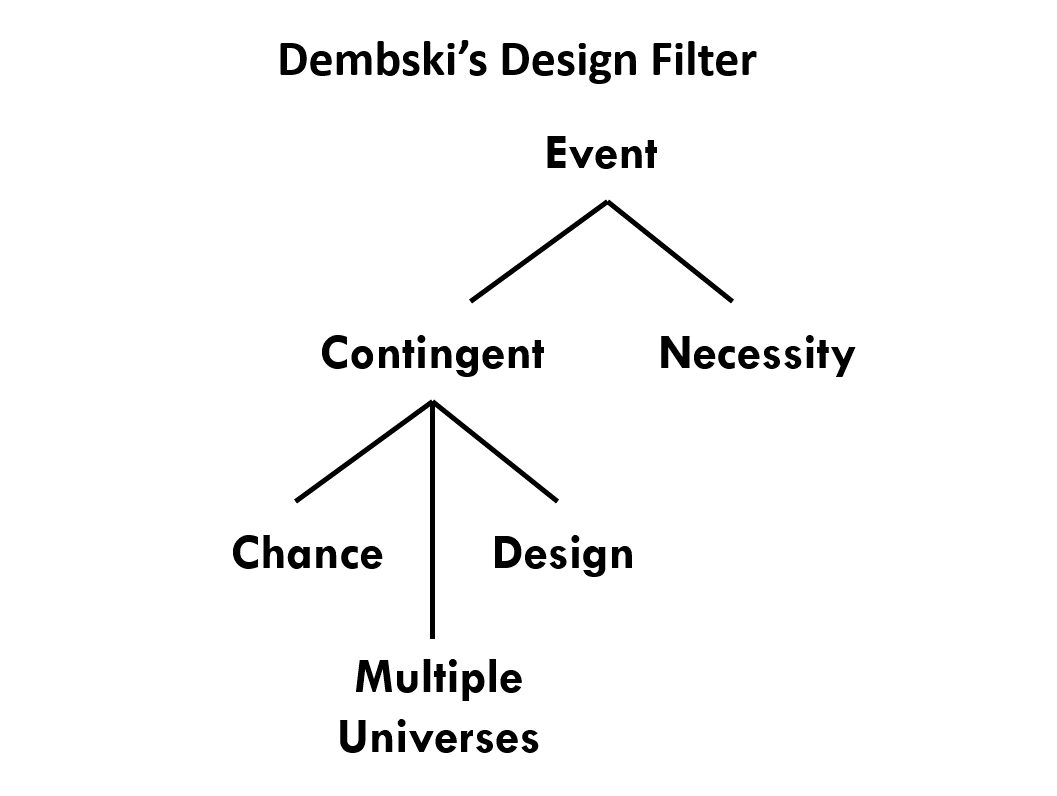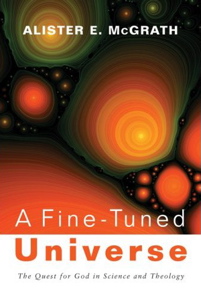Introduction

This is the second of a two-part series addressing the question of whether nature can be used as a Christian apologetic. Natural theology is a discipline that systematically explores the proposed link between God and nature. The traditional approach to natural theology seeks to prove God’s existence from what is observed in nature without reference to the Bible or other religious texts. The problem with this approach is that nature is ambiguous with respect to the question of God’s existence. In my last blog post, I discussed a second approach, proposed by Alister McGrath. In this approach nature is viewed as an “open secret” which is publicly accessible but its true meaning can only be known from the perspective of Christian faith. This Christian natural theology does not attempt to prove the existence of God from nature but rather sees what is observed in nature as reinforcing an existing belief in God.
In this post, I want to revisit the intelligent design argument (see blog post 10) from the perspective of McGrath’s idea of a Christian natural theology. There are two types of intelligent design: biological and cosmological. Biological intelligent design asserts that some biological structures are too complex to have been produced by natural selection. Cosmological intelligent design asserts that science is not able to answer certain basic questions about the origin of the universe and its basic properties. In this post we are going to focus on cosmological intelligent design and in particular a phenomenon known as cosmic fine-tuning which is perhaps the strongest argument for intelligent design.
Cosmic fine-tuning

We live in a universe that is amazingly friendly to life. The fundamental forces that govern the operation of the universe are fine-tuned for life. Change the strength of any of them just a little bit and the universe would not be able to support life. Let’s look at some examples of cosmic fine-tuning.
Resonance. Carbon, oxygen, nitrogen and hydrogen are the four key elements of life. Hydrogen was formed at the beginning of the universe while all other elements were formed in stars. Carbon is crucial for life for two reasons. One reason is its unusual chemical properties that allows it to bond to itself and to other elements to form highly complex molecules such as DNA. The second reason is that the formation of carbon is the key to the formation of oxygen and nitrogen. Carbon is formed in stars through the combination of a helium nucleus with a beryllium nucleus. This reaction depends on a phenomenon called resonance in which the ground state energy levels of the nuclei must be fine-tuned to within +/-1%. Fred Hoyle, the scientist who figured out how carbon was made in stars said that this fine-tuning was a great challenge to his atheism because it looked as if a “super intellect had monkeyed with physics as well as chemistry and biology.”
The ratio of the nuclear strong force to the electromagnetic force. The strong nuclear force holds the nucleus of atoms together (protons, neutrons as well as the fundamental particles that make up protons and neutrons). The electromagnetic force is responsible for light, electricity and magnetism. It is the force that holds atoms together to form molecules and it is responsible for all of the chemistry of life. Change the ratio of these forces by as little as one part in 1016 and no stars are formed. For the very large numbers we are going to be dealing with it is convenient to express these in scientific notation. 1016 is equivalent to a 1 with 16 zeroes after it. Another way of expressing this is to say the 1016 is 10 million billion.
Ratio of the electromagnetic force constant to the gravitational force constant. This ratio is important for the types of stars that are formed. Increase the ratio by one part in 1040 and only small stars are formed. Decrease the ratio by the same amount and only large stars are formed. Both types of stars are needed. Large stars produce the chemical elements while small, long-lived stars are necessary to have planets that exist long enough to support life. To put this precision in perspective. This is the kind of accuracy a marksman would need to hit a coin at the far side of the observable universe – 20 billion light years away.
The ratio of expansion to contraction forces at the earliest possible time after the origin of the universe. The precision needed here is one part in 1055. If the expansion is too rapid no galaxies will be formed. If the expansion is too slow the universe will collapse due to gravitational forces.
Probability of low entropy. Entropy is a measure of disorder. In order for chemical reactions to take place and thus to have life, the universe must start out with low entropy. This is because most chemical reactions depend on the generation of entropy in order to drive the reactions. It turns out it would be easy to create a universe with a high entropy level but the probability of forming a low entropy universe is very low on the order of 1 chance in 10123.
Anthropic principle
So we can see that the degree of fine-tuning of the forces of nature is incredible! There is general agreement among scientists that cosmic fine-tuning is a real phenomenon, but there’s disagreement about what it means. The perception that the universe has to be fine-tuned to support life is called the anthropic principle. There are two versions of this principal called the weak and the strong anthropic principles. The weak anthropic principle states that we are living in a special time and place in the universe where life is possible. If the constants were not the way they are, we wouldn’t be here to observe them. There is no deeper significance. The strong form of the anthropic principle asserts that the laws of physics are somehow biased toward life. Freeman Dyson, a renowned physicist, said that the strong anthropic principle implies that “the universe knew we were coming.”
The philosopher John Leslie made the following argument in support of the strong anthropic principle in his book Universes. He said imagine that you were facing a firing squad with 50 guns pointed at you and that you would be dead if any bullet strikes you. Then imagine that all 50 guns are fired but in the end you are still alive. What happened? You could say that you are still alive because everyone missed. And that would be true. That’s equivalent to the weak form of anthropic principle. But it’s not a very satisfying answer. You really want to know why they all missed. The same question applies to cosmic fine-tuning. You really want to know why the constants are the way they are. This is the strong form of the anthropic principle. Leslie argues that there are only two explanations: God or multiple universes.
Multiple universes
The idea is that there are a large or even infinite number of universes that have different values for the constants of the laws of nature. Because of the extremely large number, all possible combinations of the values of the constants exist in at least one universe. The explanation for the cosmic fine-tuning of our universe then is that we just happened to be in one with values that are suitable for higher forms of life.
How did all of these universes arise? One idea comes from string theory. According to this theory the ultimate constituents of reality are miniscule vibrating strings. The strings can oscillate in different ways and this gives rise to all of the fundamental particles in the universe. In this theory there are 11 dimensions rather than the four that we normally experience (3 space dimensions and one time dimension). The reason we don’t notice the other dimensions is that they have been compacted. The problem with this theory is that there are a large number (101000) of solutions to the equations describing string theory rather than a single solution. Some critics thought that this doomed string theory but string theorist have turned lemons into lemonade by suggesting that all the solutions are real leading to a very large number of actual universes with different laws of nature.
There are several other versions of multiverse theories that have been proposed.
- An alternate interpretation of quantum theory (Many Worlds) originally developed by Hugh Everett
- Birth of new universes from black holes.
- The birth and inflation of multiple universes from a pre-existing, eternal meta universe.
It is not clear what, if any, relationships exist between these different versions of the multiverse theories. There is not space in the context of this post to discuss the other alternatives. If you would like to pursue this further John Gribbin‘s book In Search of the Multiverse is a good source.

The multiverse theories lie at the boundary of science and metaphysics. Science works through an empirical process involving the interplay of experience and the theories or models that explain the experience. The theories for the origin of the multiple universes result from mathematical models that go well beyond experience. At the moment there’s no empirical evidence for the existence of any universe beyond our own and it is not clear whether it will ever be possible to obtain such empirical evidence. While some believe that the multiverse theories represent real science, others such as John Polkinghorne see multiverse theories as metaphysics. Polkinghorne, who is an eminent quantum theorist as well as a theologian, puts it this way,
Let us recognize these speculations for what they are. They are not physics, but in the strictest sense, metaphysics. There is no purely scientific reason to believe in an ensemble of universes. By construction these other worlds are unknowable by us. A possible explanation of equal intellectual respectability – and to my mind greater economy and elegance – would be that this one world is the way it is, because it is the creation of the will of a Creator who purposes that it should be so.
Implications for the intelligent design argument.

Standard intelligent design argument. The standard intelligent design argument (see blog post 10) is a classic example of the traditional approach to natural theology. This approach seeks to find evidence for God’s activity within gaps in the chain of natural explanations. The problem here is that these gaps could be due to God or some as yet unknown natural mechanism. William Dembski developed a design filter to distinguish between these two possibilities. The filter is a decision tree that works through the process of elimination. In the case of cosmic fine-tuning the final choice is between chance, multiple universes or design (God?). If there is only one universe, then chance can be eliminated because of the extreme precision of the cosmic fine-tuning. But if there really are a large or infinite number of universes than it is very likely that one or more of those universes would have laws of nature that are friendly to life. In this situation the filter is not able to decide between design and multiple universes.
We don’t know whether there really are multiple universes. While it doesn’t have empirical support, it does have theoretical support. Thus the multiverse explanation of cosmic fine-tuning is at least a plausible alternative to intelligent design and this greatly weakens the apologetic value of the traditional argument from design.
A Christian intelligent design argument. Now let’s look at what happens if we approach the intelligent design argument from the perspective of Alister McGrath’s Christian natural theology. John Henry Newman, perhaps the greatest English theologian of the 19th century, famously said, “I believe in design because I believe in God; not God because I see design”. A Christian intelligent design argument begins with the Christian framework in which
- God is understood to be the creator of all things both living and non-living
- God created with wisdom and order
- God is sovereign over all creation.
- Humans are seen as the pinnacle of God’s creation – created in the image of God with a purpose.
There is significant resonance between this Christian framework and the empirical observations of cosmic fine-tuning. A life-friendly universe is exactly what one would expect if God intended to create life on earth with humans as the pinnacle of his creation. Thus there strong agreement between the Christian vision of God, which is believed on the basis of scripture, and what is observed in nature. From the Christian intelligent design perspective, the question of the existence of multiple universes is irrelevant to the apologetic argument. If there truly are multiple universes, far from disproving God, their existence would simple add to the glory of God’s creation (Psalm 19).
Conclusions
The question we’ve been addressing in the last two posts is whether nature can be used as a Christian apologetic. The answer is yes, but not in isolation from God’s revelation in scripture. The virtue of nature in apologetics is that it is publicly accessible. But there are two problems with using nature alone as an apologetic. First, without scripture, the apologetic doesn’t lead to the Christian God. Second, nature is ambiguous with respect to the question of God’s existence. This is why atheists can claim that nature (science) disproves God while some Christians argue that nature proves that God exists.
We talked about Alister McGrath’s idea of a Christian natural theology which views nature as a publicly accessible “open secret” whose true meaning can only be understood from the perspective of Christian faith. Rather than seeking to prove the existence of God from nature alone, a Christian natural theology sees what is observed in nature as reinforcing an existing belief in God because of the resonance between the Christian worldview and what is observed in the natural world. In this post, I’ve applied the Christian natural theology approach to the intelligent design argument relating to cosmic fine-tuning. We saw that a Christian intelligent design argument that started with the Christian framework rather than from nature alone was more compelling because it eliminated the multiverse problem that weakened the tradition intelligent design argument.
Looking Ahead. The next post will be the last in this series. It will be a reflection about our conversation in the series.
Questions for Further Reflection:
- How might you use the Christian natural theology approach to show a non-believer the superiority of the Christian understanding of nature?
- Paul says in Romans 1:20, “For since the creation of the world God’s invisible qualities – his eternal power and divine nature – have been clearly seen, being understood from what has been made, so that men are without excuse”. The Christian natural theology approach sees nature as reinforcing belief in God rather than proving God’s existence. Does this approach do justice to the force of Paul’s statement?

Suggestions for Further Reading:
- God’s Undertaker: Has Science Buried God?, John C. Lennox. Lion Books, 2009 (Updated edition).
- The Open Secret: A New Vision for Natural Theology, Alister E. McGrath. Wiley-Blackwell, 2008.
- A Fine-Tuned Universe: The Quest for God in Science and Theology, Alister McGrath. Wiley-Blackwell, 2011.
- In Search of the Multiverse, John Gribbin. Penguin, 2010.
- Science’s Alternative to an Intelligent Creator: the Multiverse Theory, Tim Folger. Discover Magazine, December issue, 2008.
- Added by the editor: PDF with the titles and links to the posts in Tom Ingebritsen‘s Christianity and Science series. Yes, this was created to meet the requests of readers and will be updated. Your interest in and encouragement of this series is much appreciated. To God be the glory!
Tom Ingebritsen is an Associate Professor Emeritus in the Dept. of Genetics, Development and Cell Biology at Iowa State University. Since retiring from Iowa State in 2010 he has served as a Campus Staff Member with InterVarsity Graduate & Faculty Ministry at Iowa State University

Nice knowledge of fine tuned univers